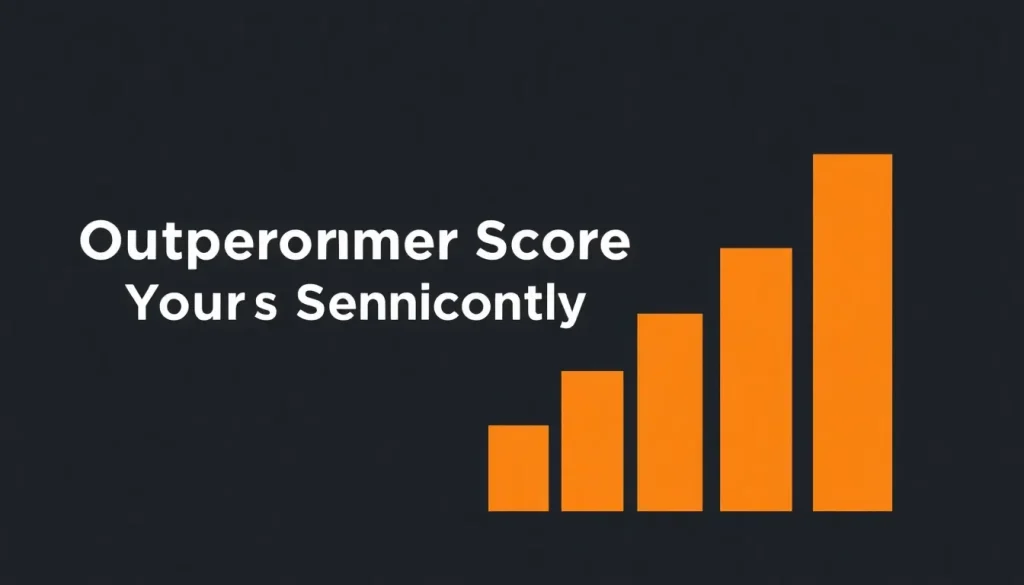My Net Promoter Score Outperforms Yours Significantly

In today's competitive business landscape, understanding customer sentiment is crucial for success. One of the most widely used metrics for gauging customer loyalty and satisfaction is the Net Promoter Score (NPS). This article delves into the intricacies of NPS, how it impacts businesses, and the implications of various scores.
Many companies proudly display their NPS as a badge of honor, claiming it as evidence of superior customer service. For instance, Nutanix has long touted its impressive NPS, which has recently reached notable heights. But what do these scores truly indicate about a company's relationship with its customers? Let's explore.
Understanding NPS mechanics
The Net Promoter Score is a distinct metric that ranges from -100 to +100. It was conceptualized by Fred Reichheld and introduced in a Harvard Business Review article in 1993. The methodology has found widespread adoption, particularly through Bain & Company and Satmetrix.
The core of NPS lies in a simple survey question: “On a scale from 0 to 10, how likely are you to recommend our product/service to a friend or colleague?” Based on their responses, customers are categorized as follows:
- Detractors (0-6): Unhappy customers who can damage your brand through negative word-of-mouth.
- Passives (7-8): Satisfied but unenthusiastic customers who are vulnerable to competitive offerings.
- Promoters (9-10): Loyal enthusiasts who will keep buying and refer others.
The NPS score is calculated by subtracting the percentage of detractors from the percentage of promoters. The resulting figure can yield insights into customer loyalty and satisfaction levels.
Recent NPS benchmarks in the tech industry
The NPS scores can vary significantly by industry. In the tech sector, for example, some recent scores include:
| Company | NPS Score |
|---|---|
| Cohesity | 100 |
| HPE Nimble | 85 |
| HYCU | 91 |
| Nutanix | 90 |
| Pure Storage | 83.5 |
| Rubrik | 82 |
| Veeam | 73 |
For example, Nutanix has consistently achieved high scores, with a spokesperson indicating that it has maintained an NPS of 90 for several years. This impressive rating reflects their commitment to customer satisfaction and service excellence.
Actionable insights from NPS
While achieving a high NPS is commendable, the real value lies in the insights derived from it. In 2018, HPE emphasized that the numerical value of NPS itself is not as critical as the actionable insights gained from it. Dr. James Borderick, who managed the Net Promoter Competitive Loyalty program at HPE Software, stated, “What matters is the actionable insight that you have learned, and where you stand relative to your competitors.”
Pure Storage has taken a similar approach, focusing on customer feedback to enhance their service delivery. They highlight the need for independent validation of NPS scores to ensure a comprehensive understanding of customer sentiment, stating:
- “Pure’s audited score was more than twice the B2B average of 40.”
- “It was the highest among Medallia B2B scores in 2019.”
By actively listening to customer feedback and implementing changes based on NPS results, companies can significantly improve their customer experience and loyalty.
Challenges surrounding NPS
Despite its popularity, NPS is not without its challenges. One major concern is how companies handle declines in their scores. Transparency in sharing NPS results can be a double-edged sword; a low score can harm credibility and customer trust.
In a Harvard Business Review article, Christina Stahlkopf from C Space highlighted that while NPS can guide companies in the right direction, it often lacks depth. They found that:
- 52% of individuals who discouraged others from using a brand had also previously recommended it.
- Many customers may have mixed feelings about a brand, promoting some products while criticizing others.
This complexity indicates that NPS may overlook significant portions of the customer experience. Companies might consider focusing more on actual customer behavior rather than relying solely on a numerical score.
Comparative NPS scores: What does it mean for your business?
When evaluating NPS scores, businesses often wonder what constitutes a “good” score. Generally, scores above 0 are considered acceptable, while scores above 50 are viewed as excellent. Nutanix's current score of 90 is exceptionally high, suggesting a strong customer base that is both loyal and enthusiastic about the brand.
Conversely, scores can also highlight potential issues. A score below 30 may indicate significant dissatisfaction among customers, signaling that a company should take immediate action to address concerns. Here’s a quick breakdown of what different NPS ranges might imply:
- 0-30: Potentially problematic; customers may not feel valued.
- 31-50: Room for improvement; some customers express dissatisfaction.
- 51-70: Good to great; a solid base of promoters.
- Above 70: Exceptional; a loyal and enthusiastic customer base.
As such, understanding NPS scores in context allows businesses to refine their strategies and enhance customer relationships effectively.
Is a high NPS always better?
While a high Net Promoter Score is generally desirable, it's essential to remember that it is not the only indicator of a company's health. A high NPS score does not guarantee a company's success; it merely serves as one of many tools to evaluate customer loyalty. Companies need to complement NPS data with qualitative insights to fully understand customer sentiment.
In addition, external factors such as market trends, customer demographics, and industry competition can also influence NPS. Therefore, businesses should adopt a holistic approach to customer feedback, integrating NPS with other metrics like Customer Satisfaction (CSAT) and Customer Effort Score (CES) to gain a comprehensive view of their performance.
For further insights into mastering customer experience, consider exploring this informative video on NPS:
Understanding NPS and its implications can empower businesses to foster stronger customer relationships, ultimately driving growth and success in their respective markets.




Leave a Reply